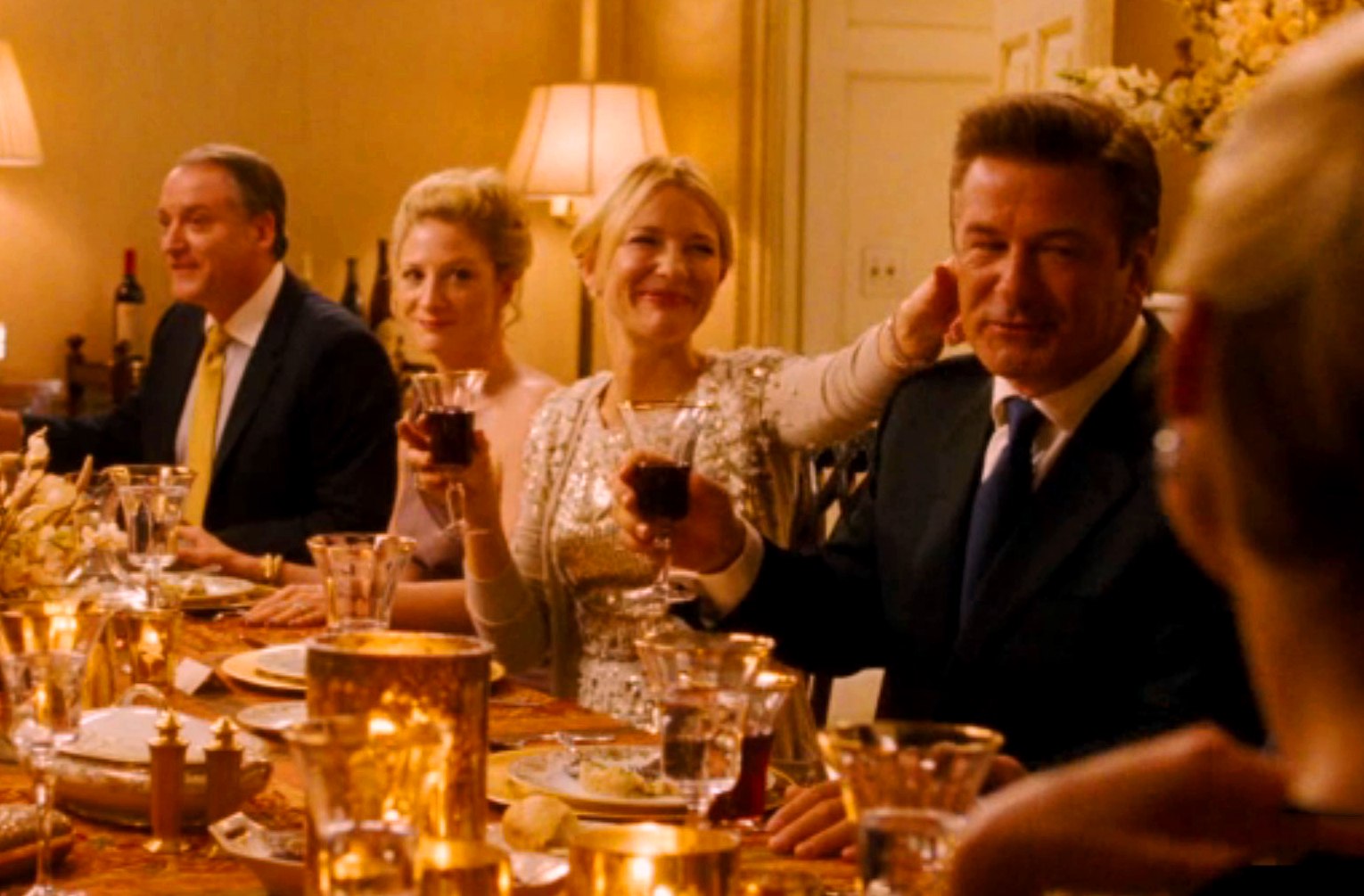
The most powerful drama by Woody Allen since the 1970’s. Blue Jasmine is another breakthrough and change of pace for Allen, who shoots in San Francisco as a primary location for the first time. But the electrifying center belongs to Cate Blanchett as a woman of elitist class, who loses first her husband, then all the money she ever had. It is the performance of a lifetime. And yet there is an abundance of stunning performances including Sally Hawkins as her humble sister, Andrew Dice Clay as her ex-husband and Alec Baldwin as a heartless venture capitalist whom Jasmine was married to. Allen has written an extraordinary lead part for Blanchett and another dozen plum roles.
Jasmine though is not a likeable woman, which will offend audiences that expect that movies should study only good conformist people. She yaks off in a woman’s ear, amiably but rudderless, in the first scene. Within a few moments we learn Jasmine is a former East Coast blueblood, who has moved to San Francisco to crash with her kooky sister Ginger (Hawkins) until she can land on her feet.
The narrative by Allen is as non-linear as anything he’s done since “Annie Hall” (1977). I interviewed Allen for the first time a year ago, and remember him saying that he has felt he has never truly made a great film like “The Bicycle Thief” (1948, Italy) or “Rashomon” (1950, Japan). This is what drives Allen every couple of years or so to reach beyond his norm. “Jasmine” feels like a bid to challenge himself, working outside the box, and using the flashback structure “Rashomon” as a blueprint – we see Jasmine’s cozy marriage, immersed in denial that her husband is honest, and how she dismissed her sister and then husband Augie as unworthy.
Now Jasmine is desperate to reinvent herself. Consider the promising leads for Jasmine: school enrollment, a job, and a wealthy boyfriend. But with each setback, we see her fall apart at the seams. Blanchett’s virtuoso acting has us analyzing every detail of look, nuance and intonation. Narcissism, megalomania, delusions of grandeur and perhaps early stages of schizophrenia are among the notes Blanchett plays.
 It still wouldn’t have been half as compelling without Baldwin’s snaky deceptions, Clay’s blue collar proclamations, or Hawkins as the cheery woman hardly ever offended by her sister’s arrogance. The one performance that is a bit leaky is Peter Saarsgard as the prospective suitor to Jasmine, for he doesn’t exude wealth as much as he does dorkiness and general un-masculinity. Yet at least it’s an interesting casting decision. The fact that he’s not perfect for Jasmine, and that she is deluding herself with him, is what makes the whole relationship a sad miscalculation.
It still wouldn’t have been half as compelling without Baldwin’s snaky deceptions, Clay’s blue collar proclamations, or Hawkins as the cheery woman hardly ever offended by her sister’s arrogance. The one performance that is a bit leaky is Peter Saarsgard as the prospective suitor to Jasmine, for he doesn’t exude wealth as much as he does dorkiness and general un-masculinity. Yet at least it’s an interesting casting decision. The fact that he’s not perfect for Jasmine, and that she is deluding herself with him, is what makes the whole relationship a sad miscalculation.
The idea of resurfacing herself to moneyed privilege is a goal that Jasmine refuses to give up on. During her journey she develops a tad of temporary civility and minimum graciousness for the working class around her. But as she nears to her comeback in social class (as she sees it), the snobbery of her persona gets dialed up dangerously high.
In contrast, characters played by Bobby Cannavale and Louis C.K. are happy figures who have their own careers and identities and yet aren’t defined by money. What Jasmine needs is a mentor, but she also refuses that kind of help. Robert DeNiro and Harvey Keitel have played unforgettable men of self-destruction. Finally, Blanchett gets to unforgettably play a female character overloaded on ego.
Back in 1978, Allen elicited a wrenching and powerful performance by Geraldine Page as a longtime wife scorned in “Interiors,” itself a stark domestic drama of a family torn apart by divorce. Allen has since directed several actors to Oscars, but Blanchett’s entry is the crown jewel of all his films.
98 Minutes. Rated PG-13.
DRAMA / FOOD FOR THOUGHT / PROVOCATIVE MOOD
Film Cousins: “A Streetcar Named Desire” (1951); “Mississippi Mermaid” (1969, France); “Interiors” (1978); “Safe” (1995).





